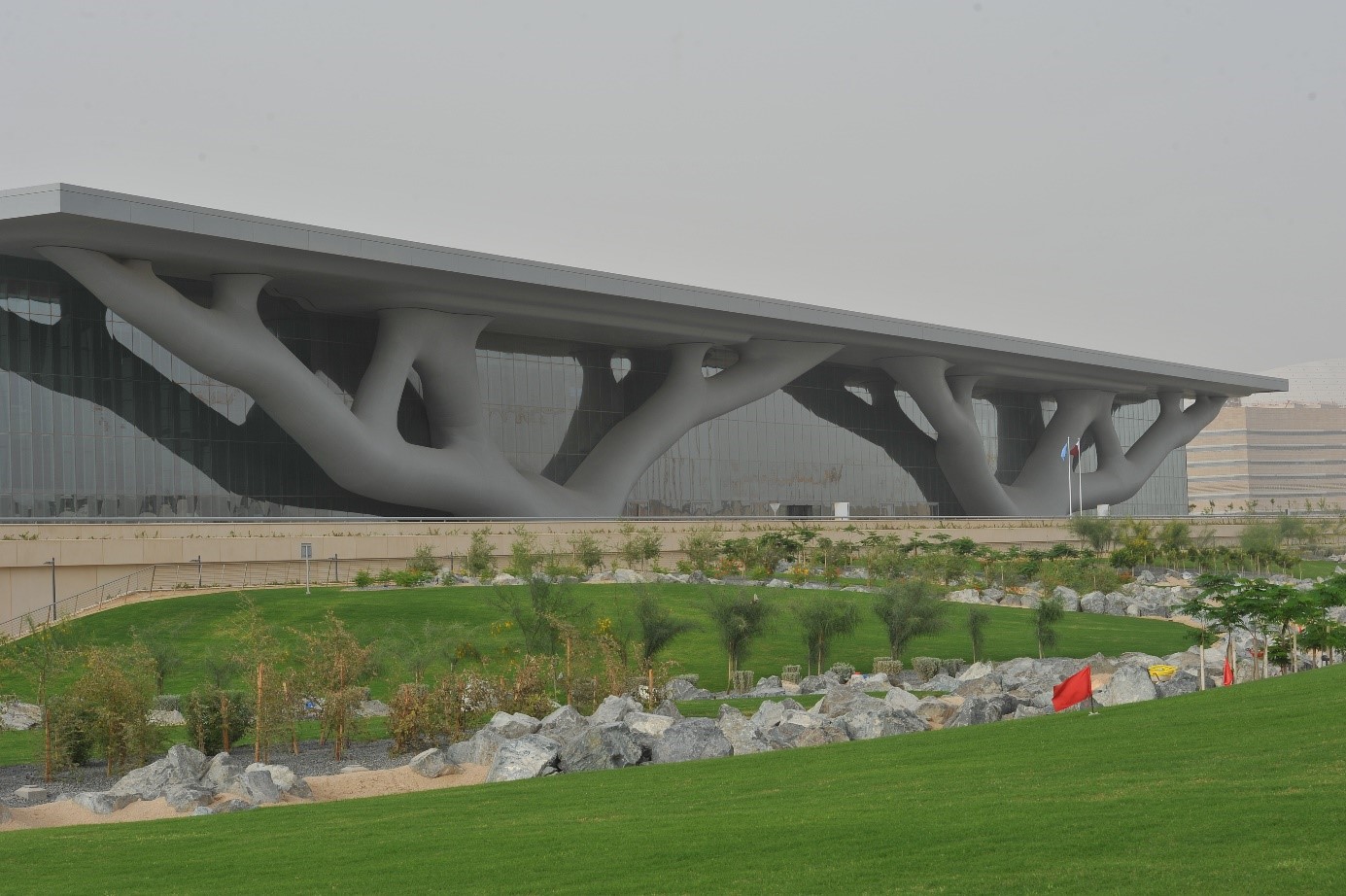Megaprojects and the limits of ‘green resilience’ in the global South: Two cases from Malaysia and Qatar
Blog by Agatino Rizzo
- Created
- 12 Mar 2019, 10:11 a.m.
- Author
- Agatino Rizzo
- DOI
- 10.1177/0042098018812009
Abstract: https://journals.sagepub.com/doi/full/10.1177/0042098018812009#abstract
The Qatar National Convention Centre located in Education City is built according to US Green Building Council's Leadership in Energy and Environment Design (LEED) Gold certification standards (source: Wikimedia).
Back in 2009, when I moved from Europe to Asia to work as a faculty in Malaysia little did I know about the dramatic transformation that Asian cities were going through to diversify their economy. Back then, I was still locked in the very Eurocentric lens of developed Vs. developing world and the reliance of these latter countries on commodities export. It took me a number of years and readings to slice this very simplistic heuristic (i.e. developing/developed), and appreciate the efforts that governments were pouring in cities and other fixed assets to attempt transforming their countries in urban economies. In this sense, the work of Asian-focused, or I should better say global South-focused, urban researchers was invaluable to overcome my ontological limitations about the nature of the urbanization process in the South. At the same time, and from other disciplinary strands, the work of some political ecologists has been crucial for me to rethink “green thought” and the centrality of the fossil-based capital in shaping knowledge, and therefore policy, worldwide.
With these tools in mind and thanks to a NUS-ARI sponsored workshop on “Resilient Cities for Human Flourishing”, I have attempted to re-discuss the usefulness of popular sustainability discourses that have become mainstream in the planning academic and business fields. I am talking about green urbanism, of course, and its ramifications and sub-optimizations in concepts such as eco-cities, green transport, and so forth, which in my paper I have grouped under the label “green resilience”. To make this ambitious goal feasible for me, in my article I focus on “green megaprojects”, i.e. large, master planned developments backed by governments that incorporate sustainability features. Urban literature shows that megaprojects, in general, are extremely popular among the rising markets of the global South and naturally popularized by media worldwide. I believe my paper is important because at the moment an enormous amount of money that could be better invested in projects to transition to renewable energy, expand the capacity of public transport, and improve the quality of the building stock in Asia is instead diverted to green megaprojects that not always succeed (Masdar City in Abu Dhabi is a case in point).
By focusing, comparatively, on the cases of Iskandar Malaysia and Education City in Qatar I have attempted to exemplify the typical socio-ecological shortcomings of megaprojects (I am talking about landscape and social displacements) and show that the investment in the “green” theme has done very little to heal their “predatory” logics. In facts, the very logic of a mega, urban technological fix is nothing more than a screen, I suggest in my conclusions, for business as usual needs and political “risiko”. Both, Iskandar Malaysia and Education City want to provide templates for sustainable city making in their respective countries, but unfortunately, their inherent elitist nature makes clear that only well-to-do are eligible for such objective. Moreover, the rules and process that underpin their construction emphasize certain discourses, e.g. the primacy of Islam in Malaysia or absolute monarchy in Qatar, rather than allowing a more free and critical interpretation of the ecological consequences of turbo-capitalism. So, if we are to reboot the current planning policies in the South we must ditch green resilience and its physical artifacts (e.g., green megaprojects) and re-think the very idea of resilience in planning from a more complex perspective. One that, between the cracks of the boom and bust cycles of an unfair, neoliberal economic-thought, can provide with alternative visions of development.
Read the paper on Urban Studies - OnlineFirst here.



Comments
You need to be logged in to make a comment. Please Login or Register
There are no comments on this resource.